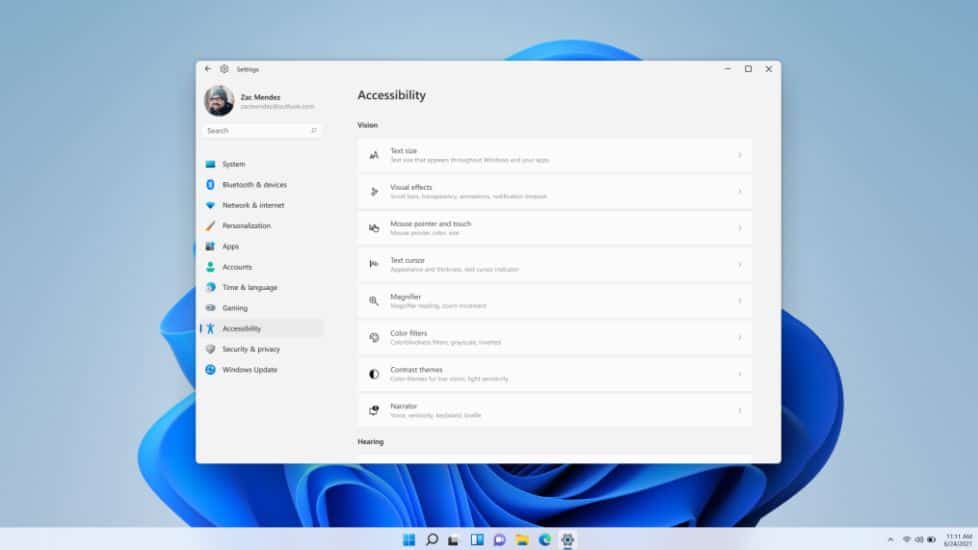Microsoft explains the Accessibility improvements coming in Windows 11

Microsoft today explained the Accessibility improvements coming in Windows 11. You can try out these new improvements in the Windows 11 Preview Build 22000.51 which was released early this week to Windows Insiders. You can find the summary of the accessibility improvements below.
-
People who are blind, and everyone, can enjoy new sound schemes. Windows 11 includes delightful Windows start-up and other sounds, including different sounds for more accessible Light and Dark Themes.
-
People with light sensitivity and people working for extended periods of time can enjoy beautiful color themes, including new Dark themes and reimagined High Contrast Themes. The new Contrast Themes include aesthetically pleasing, customizable color combinations that make apps and content easier to see.
-
Deaf and hard of hearing, language learners, and people in noisy or in quiet environments can enjoy redesigned Closed Caption themes that are easier to read and customize.
-
People with severe arthritis, repetitive stress injuries, cerebral palsy and other mobility related disabilities, learning differences including with severe spelling disabilities, language learners and people that prefer to write with their voice can all enjoy Windows 11’s new Voice Typing feature.
-
Microsoft rebranded Ease of Access Settings to Accessibility and introduced a new accessibility “human” icon. Microsoft also redesigned the Accessibility Settings to make them easier to use. And of course, Accessibility features are available in the out of box experience and on the Log on and Lock screens so that users can independently setup and use their devices, e.g., with Narrator.
-
With Windows 11, Microsoft made it possible for both Microsoft and partner assistive technologies to work with applications like Outlook hosted in the cloud, in Azure Virtual Desktop (AVD). For example, with Windows 11, Office is accessible as a Remote Application Integrated Locally (RAIL) using Narrator. While that may sound like a lot of jargon to most people, the impact is significant. People who are blind will have access to applications like Office hosted in Azure when they need it.
Source: Microsoft
Read our disclosure page to find out how can you help MSPoweruser sustain the editorial team Read more




User forum
0 messages